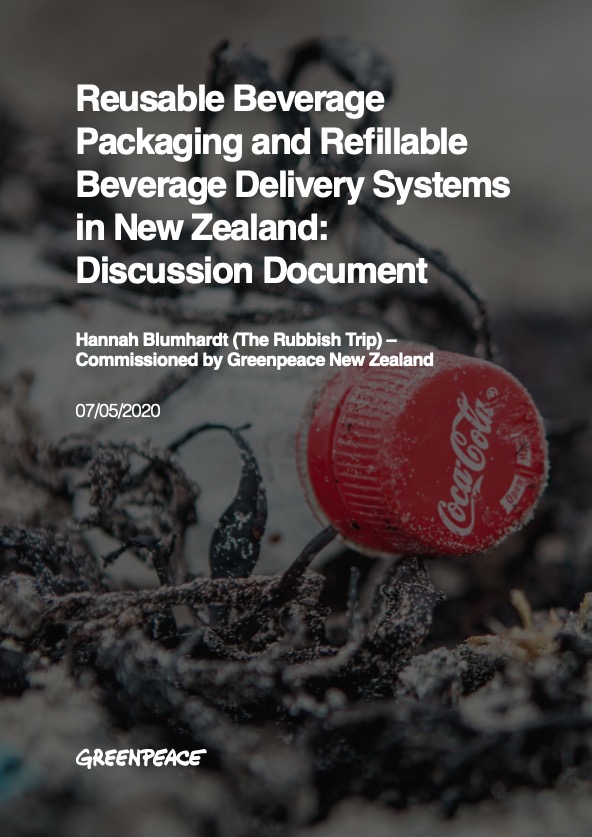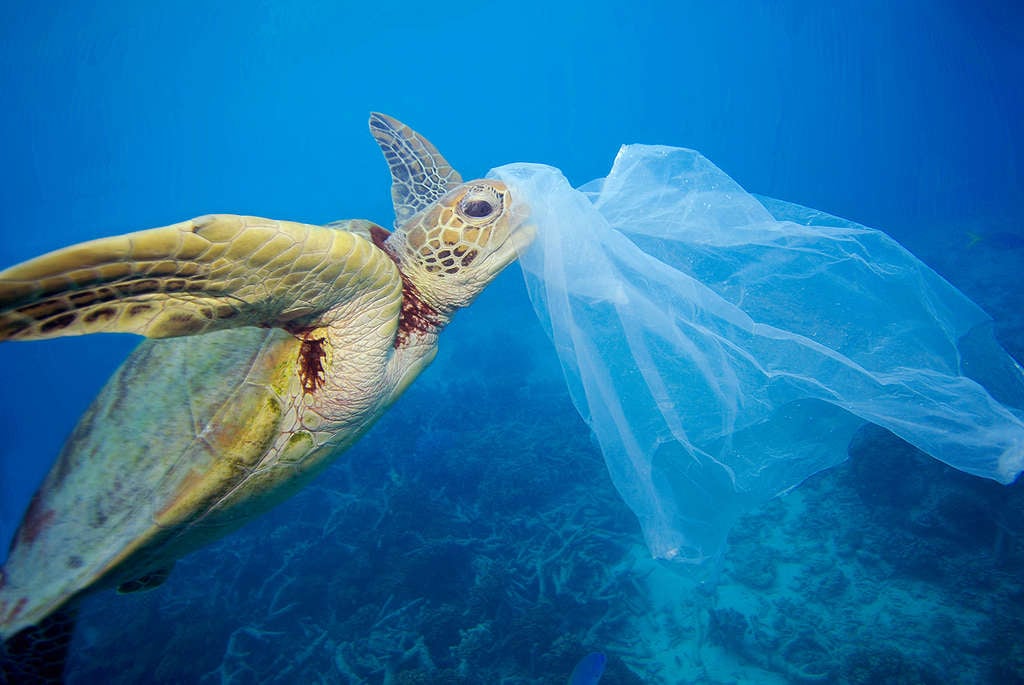Executive Summary
The New Zealand Government is considering ways to reduce the waste associated with beverages, including designing a container return scheme for beverage containers and contemplating mandatory product stewardship for beverage packaging. Greenpeace New Zealand wishes to contribute to this conversation by exploring alternatives to plastic beverage bottles.

The best solutions to waste issues are those that prevent and reduce waste and reuse resources, rather than those that increase recycling or disposal options. There is an urgent need to adopt circular economic frameworks to replace the linear ‘take-make- dispose’ pattern that currently characterises global economies.
Global beverage markets are dominated by ‘one-way’ packaging—a hallmark of the linear economy. Replacing one-way beverage packaging with reusable and refillable solutions offers a means of addressing plastic pollution, while supporting efforts to reduce greenhouse gas emissions and build a circular, zero waste economy. We consider three reusable and refillable delivery systems that could be incorporated into the Government’s plans to reduce beverage packaging waste, and the key conditions for ensuring their scalability and efficiency. These systems are not mutually exclusive and would work best in tandem.
1. Reusable packaging that beverage manufacturers take-back from customers for sterilisation and refill.
Scaled and efficient use of reusable glass bottles for beverages can reduce the overall energy and resource load of the beverage packaging system, while addressing other key environmental outcomes, such as plastic pollution. Reusable packaging systems produce more jobs than one-way systems and cost less when done at scale. Thriving reusable beverage packaging systems usually feature: a container return scheme, alongside policies to encourage reusables, such as quotas for reusables and eco-taxes on one- way containers; retailer cooperation to take empty bottles back; investment in reverse logistics, distribution and key infrastructure; standardisation of bottles; and measures to ensure convenience, efficiency and public awareness.
2. Refill stations where beverages are available “on tap” and customers bring their own containers.
Expanding access to free, clean tap water and increasing the sale of beverages “on tap” in retail outlets or through automated vending machine dispensers is an efficient, low- cost, relatively simple means of eliminating business-to-consumer beverage packaging, while offering potential for circular business-to-business packaging systems too.
3. Flavoured and/or carbonated beverages delivered as syrups and concentrates to which customers add their own water – thus reducing the need for bottles.
Soft drinks constitute a sizeable portion of the beverage market and are essentially a sugar syrup concentrate added to carbonated water. Pre-mixing in ready-to-drink format demands bottles and results in the transportation of water across large distances. Soft drinks manufacturers could transition to retailing concentrates, particularly to hospitality outlets, for mixing with carbonated water at point of drinks purchase. Such a system would dramatically reduce the costs, energy and resource usage, and packaging waste (particularly if syrups were delivered in reusable packaging) associated with soft drinks.
Download the full document here

Globally, 380 million tonnes of plastic are produced each year. Coca-Cola is the worst plastic polluter. With your help we can push the government to increase refill and reuse options to meet this global crisis.
Take Action


